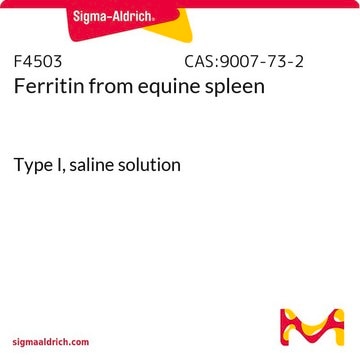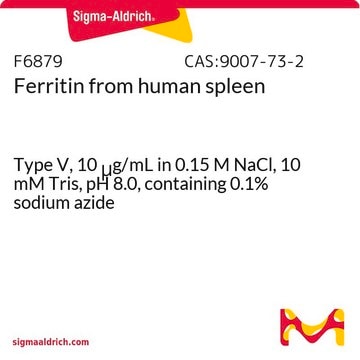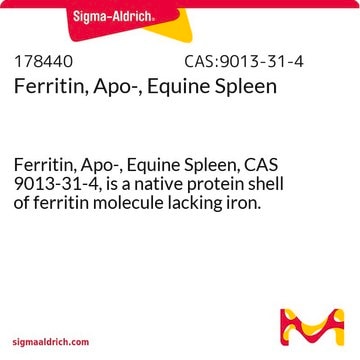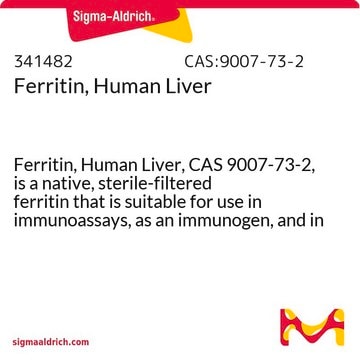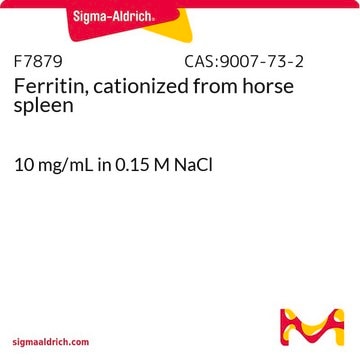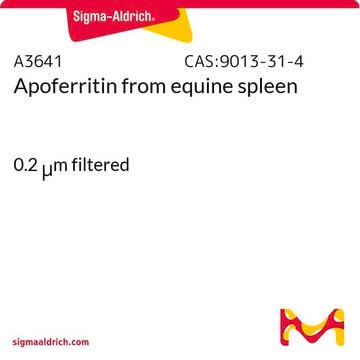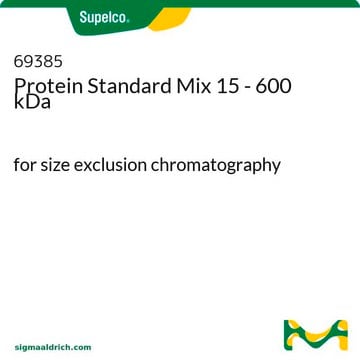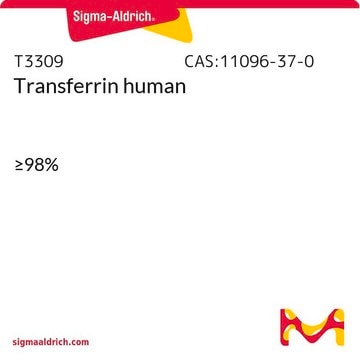F6754
Ferritin from human liver
Type IV, 10 μg/mL
Selecione um tamanho
Selecione um tamanho
About This Item
Produtos recomendados
fonte biológica
human liver
Nível de qualidade
esterilidade
0.2 μm filtered
tipo
Type IV
Ensaio
≥95% (SDS-GE)
Formulário
liquid
peso molecular
H subunit ~21 kDa
L subunit ~19 kDa
~440 kDa (a shell of 24 protein subunits (apoferritin) and a core of Fe3+ ions)
embalagem
vial of 2 μg
concentração
10 μg/mL
temperatura de armazenamento
2-8°C
Informações sobre genes
human ... FTH1(2495) , FTL(2512) , FTMT(94033)
Descrição geral
Aplicação
Ações bioquímicas/fisiológicas
forma física
Código de classe de armazenamento
10 - Combustible liquids
Classe de risco de água (WGK)
WGK 1
Ponto de fulgor (°F)
Not applicable
Ponto de fulgor (°C)
Not applicable
Escolha uma das versões mais recentes:
Já possui este produto?
Encontre a documentação dos produtos que você adquiriu recentemente na biblioteca de documentos.
Os clientes também visualizaram
Active Filters
Nossa equipe de cientistas tem experiência em todas as áreas de pesquisa, incluindo Life Sciences, ciência de materiais, síntese química, cromatografia, química analítica e muitas outras.
Entre em contato com a assistência técnica